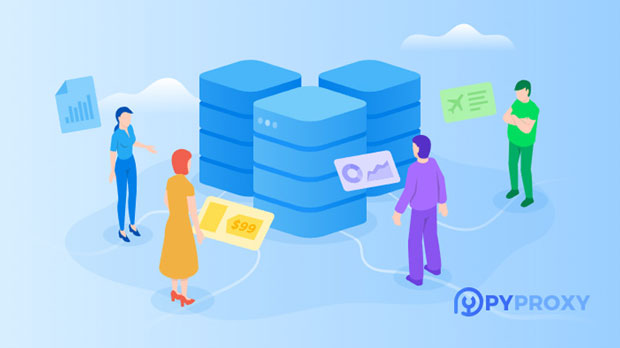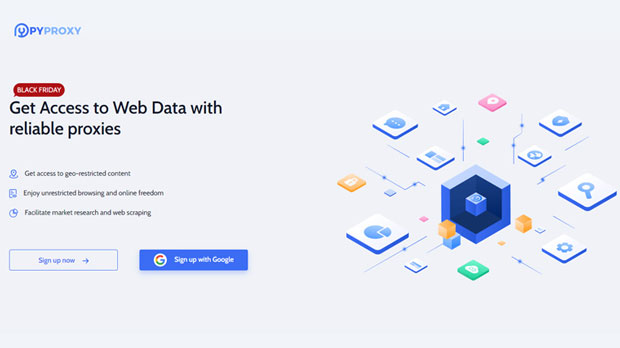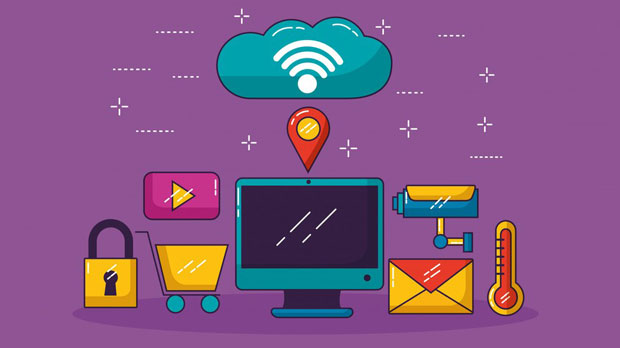In the world of web scraping, digital marketing, and online privacy, proxies are essential tools that allow users to mask their IP addresses and maintain anonymity while browsing the internet. Among the many proxy services available today, PYPROXY and StormProxies have emerged as strong contenders. These services promise high-speed proxy access, but when it comes to performance, how do they stack up against each other? This article will compare Pyproxy and StormProxies based on their HTTP protocol access speed, helping users make an informed decision when choosing between the two. Understanding Proxy Services and Their ImportanceBefore diving into the specifics of Pyproxy and StormProxies, it’s important to understand the role of proxy services in online activities. A proxy server acts as an intermediary between a client and the internet. It allows users to access websites anonymously, avoid geo-restrictions, and enhance online security. Proxies are used by businesses, developers, and individuals for various purposes, such as web scraping, data collection, managing social media accounts, and browsing without revealing one’s true identity.Both Pyproxy and StormProxies offer high-performance proxies, but the key difference lies in their speed, reliability, and ease of use, especially when dealing with the HTTP protocol.Pyproxy: A Closer LookPyproxy is known for its affordable pricing plans and robust proxy services. It is especially popular among developers and businesses that require proxy services for bulk data scraping and other high-demand activities. Pyproxy offers both rotating and static residential proxies, which are often praised for their high reliability and speed. When using HTTP proxies, Pyproxy provides fast access speeds, which makes it a favorite among users who rely on speed for scraping large amounts of data or running automated tasks.The HTTP access speed with Pyproxy is generally fast, with minimal lag, which is important when scraping websites that rely on real-time data. Pyproxy also offers a user-friendly dashboard, making it easy to manage proxy settings and track usage.StormProxies: A Competitor in the Proxy Service ArenaStormProxies is another well-known proxy service provider that specializes in high-speed proxies for businesses and individual users. Like Pyproxy, it offers rotating and dedicated proxies, but StormProxies stands out due to its simplicity and high-performance servers. The company promises ultra-fast speeds, which makes it suitable for tasks like web scraping, SEO analysis, and social media automation.When it comes to HTTP protocol performance, StormProxies offers high access speeds with minimal latency. Users typically report fast and stable connections with low downtime, which makes StormProxies a good option for time-sensitive tasks.Comparing HTTP Access Speed: Pyproxy vs. StormProxiesWhen comparing Pyproxy and StormProxies based on HTTP protocol access speed, several factors come into play, including server locations, proxy types, and overall network performance.1. Server Locations and Network Infrastructure Both services have a strong network infrastructure, but Pyproxy offers a more extensive network of proxy servers, with locations in multiple countries across the globe. This extensive network contributes to faster access speeds by allowing users to connect to servers closer to their target websites. In contrast, StormProxies has fewer server locations, which might lead to slightly slower speeds for users located far from their server hubs.2. Proxy Types and Their Impact on Speed Pyproxy offers both residential and data center proxies, giving users the flexibility to choose the best option for their needs. Residential proxies tend to provide more stable and faster connections compared to data center proxies, but they are often more expensive. StormProxies, on the other hand, primarily offers residential proxies, which are known for their high reliability and speed.3. Latency and Speed Consistency Pyproxy generally provides fast HTTP access with low latency. However, users might experience some fluctuations in speed depending on the server location and the type of proxy they are using. StormProxies, with its focus on residential proxies, offers highly stable connections and maintains consistent speeds throughout the usage period. This makes it a reliable choice for users who need consistent performance.Additional Features: What Sets Pyproxy and StormProxies ApartWhile both services excel in HTTP access speed, they also offer additional features that make them stand out in the crowded proxy market.1. Pyproxy’s User-Friendly Dashboard and Customization Options Pyproxy provides users with an intuitive dashboard that allows for easy management of proxies. The dashboard includes features like real-time data usage tracking, automatic IP rotation, and detailed proxy analytics. These features make it easy for users to adjust settings to optimize speed and efficiency.2. StormProxies’ Dedicated Support and Simple Setup StormProxies offers dedicated customer support to assist users with any issues they may encounter. This feature is especially useful for businesses and individuals who require a high level of assistance. Additionally, the service provides easy setup and configuration, allowing users to get started quickly without much technical expertise.Pricing: Cost-Effectiveness of Pyproxy and StormProxiesWhen it comes to pricing, both Pyproxy and StormProxies offer competitive rates, but the value for money depends on the user's needs. Pyproxy offers more flexible pricing tiers, allowing users to scale their usage as needed. The pricing is generally affordable, making it a good choice for individuals and small businesses.StormProxies, while offering fewer plans, provides solid value with its high-speed residential proxies and dedicated support. The pricing might be slightly higher than Pyproxy’s, but it is justified by the level of service provided, especially for users who need a consistent and reliable proxy service.Conclusion: Which Service is Better for HTTP Access Speed?Both Pyproxy and StormProxies provide excellent HTTP access speed, but the decision on which service is better depends on the user’s specific needs. If you are looking for a proxy service with a wide range of servers and customizable options, Pyproxy is an excellent choice. Its extensive server network and affordable pricing make it suitable for businesses and developers who require a flexible and fast proxy service.On the other hand, if you prioritize speed consistency and stability, especially for long-term tasks like web scraping and social media automation, StormProxies is a reliable option. Its focus on residential proxies ensures high-speed performance with minimal latency, making it a great choice for users who need reliable access at all times.
Oct 12, 2025



































































